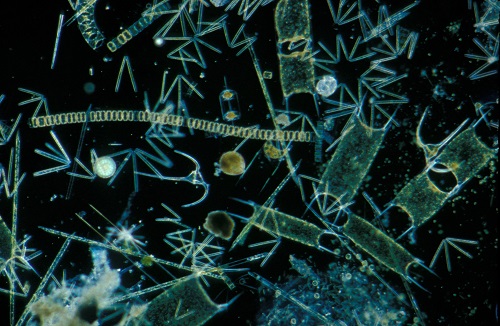The Missing Kingdom: Why Fungi Must Be Central to Conservation Strategy
28 December 2025
Published online 18 July 2015
Biological pump stronger than thought, as phytoplankton plunge traps carbon dioxide fast and deep into ocean waters.

Phytoplankton, or microalgae, are microscopic plant-like marine organisms that usually live near the ocean’s surface.
The researchers analysed ocean water samples collected during the Malaspina 2010 Circumnavigation Expedition. The expedition used a new collection device, the Bottle-Net, which was crucial in properly sampling phytoplankton 2,000–4,000 m below the surface.
Earlier methods either collected too little water or used too large a mesh, leading to unreliable estimates of phytoplankton density at such depths.
Atmospheric carbon incorporated into phytoplankton is pulled into the ocean when they sink, forming a “biological pump” that traps carbon in deep water.
If the phytoplankton sink slowly or not at all, they will decompose near the surface and release the trapped carbon in a few weeks or months, explains Josep M. Gasol of Barcelona’s Institut de Ciències del Mar, who took part in the study.
“The most unexpected part of our findings was the generality and high speed of this carbon transfer from the surface to the deep ocean, which implies that the biological pump is stronger than was thought,” he says.
The study suggests that phytoplankton probably sink as aggregates or in faecal pellets, quickly transferring carbon to the oceans’ depths, where it will remain trapped for hundreds of years, says Gasol. “In a way, this decreases the warming effect of excess carbon dioxide.”
doi:10.1038/nmiddleeast.2015.119
Stay connected: